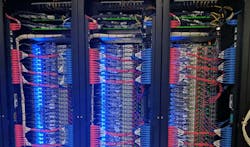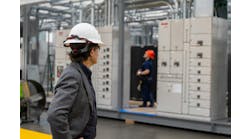Bare metal cloud server specialist Packet has emerged as an early adopter of edge computing capacity. The developer-centric company is building a “go anywhere” cloud model, and expects to deploy its gear in hundreds or even thousands of locations.
“We believe that edge computing will be radically different than the public cloud – and it’s not because of robot surgery and flying taxis just yet,” Packet says. “Instead, the edge is being driven by the opportunity to engage in a deep manner with billions of people and trillions of devices in a cost-effective way.”
The latest deployment of the Packet platform is at the EdgeConneX data center in Detroit, and will support the Sprint Curiosity IoT platform, which runs on Packet’s bare metal edge cloud infrastructure.
The goal of edge computing is to process data and services as close to the end user as possible. The trend is driven by the increased use of consumer mobile devices, especially consumption of video and virtual reality content and the growth of sensors as part of the Internet of Things (IoT).
The Sprint Curiosity IoT offering features a dedicated, virtualized network designed to be managed by software. It’s based on Sprint’s Curiosity operating system, which can manage a range of devices across a distributed network.
“What makes this deployment special is that we’re able to activate three key elements at once: bare metal cloud, rich local connectivity, and end-to-end wireless IoT services,” said Zachary Smith, the CEO of Packet. “It’s like an edge computing triple play.”
Infrastructure Optimized for Millennials
Packet was founded in 2014 to deliver automated infrastructure for developers. Its canvas is bare metal cloud, a term for dedicated servers that can be provisioned with cloud-like ease and speed. Packet says it can deploy bare metal hardware in 8 minutes, providing customers with dedicated boxes on a rapid-deploy model, similar to spinning up virtual server instances on major cloud platforms – as opposed to the hours or days to deploy a typical dedicated server.
The company operates 20 data centers around the world, serving 18,000 customers. Smith said Packet deploys tens of thousands of servers per year.
Fast, automated delivery of compute capacity is the future, and Packet is optimized for younger developers.
Zachary Smith, the CEO of Packet.
“We think the world is dominated by software, and we’re focused on the millennial or Gen Z buyer, because they’re definitely going to be the boss in the next 10 years. This generation just doesn’t (care about the infrastructure). Our biggest challenge is building an experience that is amazing and that people love.
“The (current) delivery model is awful,” Smith added. “You have to dramatically increase your expectations. These millennials didn’t grow up when the Internet didn’t work. It’s just magic that happens on the other side of the tube. I think that’s going to be a challenge for data center operators.”
Smith was previously on the leadership team at hosting company Voxel, and founded Packet with his twin brother Jacob (the Chief Marketing Officer for Packet) and Aaron Welch. Its leadership includes veterans of SoftLayer, Puppet and Internap.
Packet has raised $36 million in three funding rounds, with investors including Softbank, Dell Technologies, Samsung, Battery Ventures and Third Point Ventures. Although it has a large customer base, the majority of its revenue comes from its top 100 customers, which are primarily enterprises. This week the company added Gary Green, who has enterprise software experience at VMware and Synopsys, as Chief Revenue Officer.
Gear at the Edge, the Tower and the Stadium
Packet’s largest customer is Sprint, and the new deployment with EdgeConneX is designed to benefit Detroit’s growing autonomous vehicle and manufacturing sectors.
EdgeConneX deployed one of the earliest edge networks. Since 2013 the company has built 40 data centers, extending large-scale content distribution to markets across the U.S., Europe and South America. The company’s data centers are designed as “lights out” unmanned facilities, using sophisticated monitoring and remote hands for maintenance. EdgeConneX also operates a network of more than 3,000 wireless stations, which provides the company with deep insights on data traffic and where it needs to go.
“Given the rapid surge in the volume, velocity and variety of data, we will witness rapid growth of infrastructure being built at the Edge,” said Phillip Marangella, Chief Marketing Officer at EdgeConneX. “Packet’s deployment in Detroit is emblematic of the future demands at the Edge where emerging applications and workloads like IoT or Autonomous Vehicles are highly latency sensitive and require very proximate compute resources.”
Packet works with a number of data center operators, and is an early user of micro-modular data centers near wireless tower infrastructure. Packet has deployed gear in the first two Vapor IO sites at cell tower locations in Chicago, rolling out a 5G-as-a-Service (5GaaS) offering as part of Vapor IO’s Kinetic Edge platform. Packet also installed its equipment at an SBA Communications data center at a tower site near Gillette Stadium in Foxborough, Massachusetts.
“We’ve looked at partners who have vast real estate,” said Smith. “Today the (data center) supply chain is built almost exclusively for hyperscalers and putting 100,000 things in one place, and not 100 things in 1,000 places.
“My goal isn’t to be in Boston,” Smith added. “My goal is to be able to go wherever that customer wants me to go. I think this is the new central office model.”
And as with the old telephone network, the customer doesn’t much care what the central office looks like. They just want a dial tone. Sorting out the business models is more complicated.
“It’s still a work in progress,” said Smith. “But the enterprise customers know this is complicated and they want to find a platform and partners that can invest in. I think it’s moving incredibly quickly. The desire is there now. We see a lot of demand.”
As the business models for edge computing come into focus, Smith says, that demand will translate into rapid growth.
“Nothing makes people get serious like dollars,” said Smith. “You’ll see us deploy more data centers in the next 12 months than in the last five years.
“To me, this looks like 2006 in the cloud,” he said. “Infrastructure is exciting again. I’m excited every day about what we’re building.”






